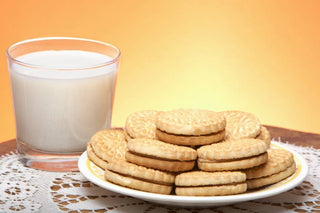Acne is often characterized as an adolescent affliction, but it affects both adolescents and adults, well into the 20s and beyond. And spotty skin is not only hard to cover up – it makes us feel like we’re not putting our best face forward.
If keeping your skin clear is a constant struggle, a growing body of evidence suggests that cutting back on high glycemic-index (GI) carbs and dairy may be key.
Published in the Journal of the Academy of Nutrition and Dietetics, a new paper by researchers from New York University's (NYU) Department of Nutrition, Food Studies and Public Health shows a link between diet and acne, particularly with high-glycemic index foods and dairy.
The study was a meta-analysis of 27 studies conducted between 1960 and 2012 that looked at diet and acne; researchers analyzed a wide range of variables, including study design, participation, intervention methods, primary outcomes, results, and conclusions, covariate considerations, limitations, and references.
The strongest link between diet and acne was found in high glycemic index/glycemic load foods as well as diets high in dairy consumption. Foods ranking high on the glycemic index include white bread, white potatoes, potato chips, short-grain white rice, corn, as well as sugary foods and beverages. These foods cause a spike in blood sugar much more quickly than low GI foods such as whole grains, legumes, and vegetables.
From Simple Carbs to Slow Carbs
For example, one Australian study showed that males who followed a strict low GI diet saw significant improvement in acne severity.
Another study showed that women whose acne was linked to polycystic ovarian syndrome, a hormonal disorder that affects women of reproductive age, saw a twofold benefit from a low-carbohydrate diet. Their hormone levels were stabilized, resulting in an improvement in their acne.
And a web-based survey of 2,528 individuals showed that 86.7% of participants saw an improvement in acne after following a low GI diet.
Experts theorize that the rise in blood sugar caused by high GI foods triggers the body to release hormones, which in turn stimulates oil production, resulting in conditions ideal for acne development.
The same goes for dairy products, particularly in those who consume two or more servings of skim milk daily. Researchers speculate that certain non-milk-fat compounds may stimulate production of insulin and other hormones including testosterone, leading to an increase in acne. They caution, however, that if milk consumption is reduced – particularly in growing adolescents – the diet should be supplemented by other calcium-rich foods such as almonds, tofu, and leafy green vegetables.
Researchers note that while the studies do not establish that diet causes acne, they do show that it may influence or exacerbate it. Based on this, they suggest that more research be conducted in conjunction with dermatologists and registered dieticians to find the best method of prevention and treatment. Researcher Jennifer Burris, MS, RD at NYU, states, “The medical community should not dismiss the possibility of diet therapy as an adjunct treatment for acne.”
The Bottom Line
This is not new information, and the message is one we’ve repeated consistently over time – evidence suggests that diet does play a role in acne, especially when we consume too many simple carbohydrates and dairy products.
Treating acne should be part of an integrated program that uses topical products, treatments, and herbal and nutritional supplements, while modifying dietary and lifestyle issues.
See our Clear Skin Guidelines for tips on how to keep your skin healthy and blemish-free. And remember, what we put into our bodies affects us both inwardly and outwardly. There’s simply no denying that!

